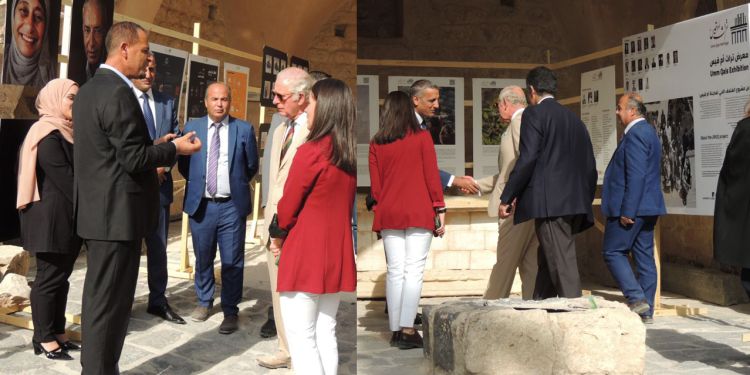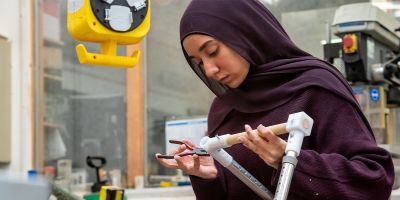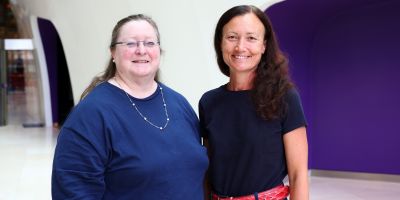HRH Prince of Wales visit University of Leeds Pioneering Project and Exhibition in Jordan

Leeds led research is part of HRH Prince Charles' visit to Jordan to exemplify the UK-Jordanian partnership and in celebration of the centenary of the Hashemite Kingdom of Jordan.
Prince Charles and the Duchess of Cornwall visited the ancient city of Umm Qais in Northern Jordan and the toured the Umm Qais Heritage project and exhibition, a University of Leeds project led by Dr Gehan Selim (School of Civil Engineering). The project is a flagship international collaboration between the UK and Jordan to develop new approaches to global challenges of preserving Heritage at risk and boosting economic and sustainable development in Jordan.
The project is funded by the Newton Khalidi Fund and The Arts and Humanities Research Council (AHRC), as part of the Global Challenges Research Fund (GCRF). The £725m investment will support projects up to 2021 and it aims to promote the economic development and social welfare of official development assistance (ODA) partner countries to address the wellbeing of communities. It will do so through strengthening partner country science and innovation capacity and unlocking further funding to support this work.
Collaborative research project
The Living Museum project is an international collaboration led by the Architecture and Urbanism Research group at University of Leeds and the Jordan University of Science and Technology, in partnership with the Centre for Architecture, Urbanism and Global Heritage (CAUGH) at Nottingham Trent University, the Council for British Research in the Levant (CBRL), and the Department of Antiquities and the Ministry of Tourism and Antiquities in Jordan.
Dr Selim says, “We were thrilled to welcome HRH Prince of Wales and the Duchess of Cornwall at the Umm Qais Museum and to have a tour of our site-based exhibition at the Umm Qais Museums. Developed to share the histories and community heritage of local families and historic buildings. It is a great testimony on the project’s long-standing commitment to revive historic crafts and support capacity building of young people in heritage documentation and creative skills”.
The project widely engaged with the local community in a series of skill training and capacity-building workshops aiming at up-scaling their skills towards using advanced media technologies in recording and preserving both the tangible and intangible heritage of the site.
Dr Selim added, “Our research focused on the local community’s socio-cultural engagement with the World Heritage site through skills development and capacity building in digital heritage and tourism enterprise, with the ultimate aim to raise the profile of the site and brand it as economically sustainable.
Our research focused on the local community’s socio-cultural engagement with the World Heritage site through skills development and capacity building in digital heritage and tourism enterprise, with the ultimate aim to raise the profile of the site and brand it as economically sustainable.
“The outputs of this project focused on ways to enhance the local community’s socio-cultural engagement with the site through skills development and capacity building in digital heritage and tourism enterprise, with the ultimate aim to raise the profile of the site and brand it as economically sustainable”.
The project widely engaged with the local community in a series of skill training and capacity-building workshops aiming at up-scaling their skills towards using advanced media technologies in recording and preserving both the tangible and intangible heritage of the site. This careful and inclusive-approach supported a range of social and economic enterprises and start-ups in the field of tourism and virtual reality tours.
International Partnership
A critical focus of the project’s work is working with young people to reconnect them to the heritage of the site and to build the next generation of cultural heritage professionals. Starting with a series of project workshops, the project recruited a team of young local volunteers working on the site to help digitally record the physical heritage and within the local community to document local intangible heritage and community narratives.
This collaborative partnership has setup a new conceptualisation of Participatory Heritage and sought to advance creative economic practices which is uncommon in Jordan.
The project is also providing ways in which marginalised local communities can generate innovative initiatives, build capacity and improve a previously limited set of skills providing the communities with creative opportunities to overcome future challenges of poverty.
The success of this collaborative work has recently been recognised by the award of new funding by the UK’s AHRC for the University of Leeds to lead the CEARC project to extend the research agenda to engage with women and young people in the local community through women-led craft enterprise.
Further information
www.UmmQaisHeritage.com
Twitter: @Living_Museum_
Facebook: www.facebook.com/UmmQaisJordan
For media enquiries, please contact Dr Gehan Selim.




